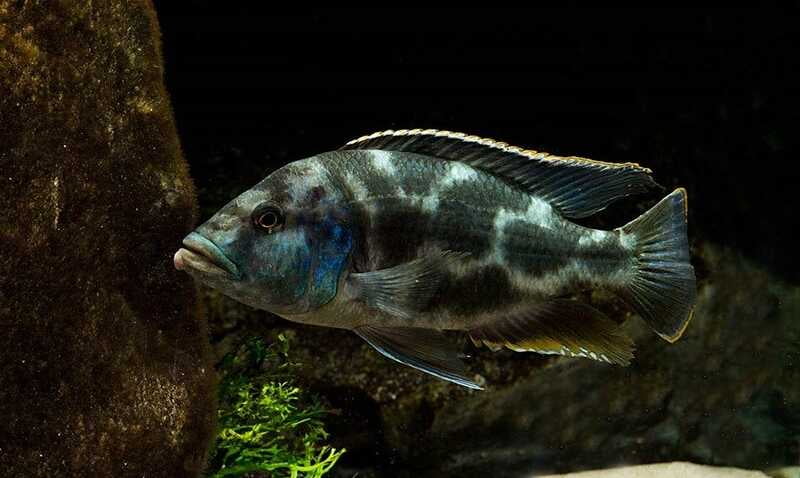
Nimbochromis Livinstonii
The Nimbochromis livingstonii, commonly known as Livingston's cichlid, is a species of cichlid fish native to Lake Malawi in East Africa. Here are some key characteristics and information about this fish:
Habitat: Nimbochromis livingstonii is found in the rocky shores and deep waters of Lake Malawi. It prefers areas with rocky substrates and caves where it can seek shelter.
Appearance: The Livingston's cichlid has a distinctive appearance. It has a streamlined body with a pointed snout and large eyes. The body coloration can vary, but it is typically brown to gray with darker markings. The males tend to be larger and more colorful than the females.
Behavior: This species is known for its predatory behavior. It is a piscivorous cichlid, meaning it primarily feeds on other fish. It uses its streamlined body and sharp teeth to capture and consume its prey.
Breeding: Nimbochromis livingstonii is a mouthbrooder, where the female incubates the fertilized eggs in her mouth until the fry (young fish) are large enough to swim on their own. This behavior is common among cichlid species and serves as a protective mechanism for the offspring.
Aquarium Care: If you are considering keeping Nimbochromis livingstonii in an aquarium, it's important to provide a setup that mimics their natural habitat. This includes rocky structures and caves for hiding places. They can be aggressive, especially during breeding, so tank mates should be chosen carefully.
Diet: Being a piscivorous fish, Livingston's cichlid requires a diet that includes a good amount of protein, preferably in the form of high-quality pellets or live/frozen foods such as small fish, shrimp, or insect larvae.
Conservation: Like many species in Lake Malawi, Nimbochromis livingstonii faces conservation challenges due to habitat degradation and overfishing. Conservation efforts are essential to protect the biodiversity of the lake and its unique cichlid species.
It's important to note that keeping cichlids, especially those with predatory behavior, requires careful consideration of tank setup, tank mates, and feeding to ensure the well-being of the fish and maintain a healthy aquarium environment.



